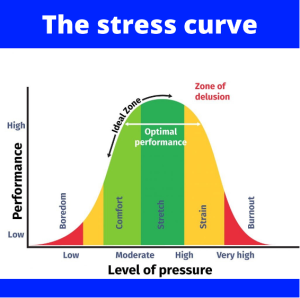Stress—it’s a word that often carries a negative connotation. We tend to associate stress with sleepless nights, anxiety, and health problems – and that’s not wrong. However, not all stress is created equal. In fact, there’s a side of stress that can be incredibly beneficial, even motivating.
The Two Faces of Stress
Good stress, also known as eustress, is the positive side of the stress spectrum. It’s the kind of stress that can fuel our ambitions and spur us to achieve our goals. Think of eustress as the excitement you feel before embarking on a new adventure or the surge of adrenaline you get just before a big presentation. Distress, on the other hand, is the harmful and chronic form of stress that many of us are all too familiar with. It can have detrimental effects on both our physical and mental health. Chronic anxiety, constant worry, and physical symptoms like headaches or digestive issues are often signs of distress.
Unlocking the Benefits of Eustress
Despite our aversion to stress and our desire for perpetual zen, it’s crucial to recognize that stress, when properly managed, can be a potent catalyst for personal growth and achievement, bolstering our resilience and self-efficacy.
Eustress can be likened to the surge of adrenaline experienced before a significant presentation or embarking on a new adventure. This urgency pushes us out of our comfort zones, encouraging us to tackle new challenges. Research underscores that moderate levels of stress can boost performance and productivity, enhancing our confidence in our abilities. When confronted with a demanding situation, our bodies release stress hormones like adrenaline and cortisol, preparing us to address the task at hand. This heightened state of alertness can be invigorating, optimizing our performance.
Moreover, stress possesses the remarkable capacity to ignite creativity. It acts as the catalyst, pushing us to think beyond conventional boundaries and generate innovative solutions to problems, further boosting our self-efficacy. Numerous historical creative breakthroughs resulted from individuals embracing the stress of a challenge and transforming it into an opportunity for innovation. Scientific studies have suggested that moderate stress levels can activate neural pathways associated with creative thinking. In certain scenarios, the pressure of a looming deadline or the need to find a solution can enhance our creative abilities.
 Exercise, in particular, offers a compelling avenue to harness the potential of eustress. Physical activity introduces a positive form of stress to our bodies, eliciting the release of endorphins—our natural mood enhancers. These endorphins not only elevate our mood but also act as natural pain relievers, alleviating stress-induced discomfort.
Exercise, in particular, offers a compelling avenue to harness the potential of eustress. Physical activity introduces a positive form of stress to our bodies, eliciting the release of endorphins—our natural mood enhancers. These endorphins not only elevate our mood but also act as natural pain relievers, alleviating stress-induced discomfort.
Consistent exercise not only aids in stress management but also contributes significantly to improved physical and mental well-being, further building our resilience to stress.
When Does the Scale Tip?
It’s vital to recognize when stress shifts from motivation to debilitation. While we appreciate bursts of stress for motivation and resilience, we need periods of rest. Otherwise, stress becomes chronic and our bodies (and minds!) struggle to keep up.
So, how can you tell if the demands of daily life are becoming overwhelming? One unmistakable sign is chronic anxiety. If you’re constantly anxious or restless, it’s time to address the underlying sources of distress.Persistent sleep issues are another indicator of high distress levels. Stress can disrupt your sleep, worsening the problem. Additionally, stress can manifest physically, leading to headaches, muscle tension, stomach problems, and more. Be attentive to these symptoms; they may indicate chronic distress that needs addressing.
Concluding Thoughts
In our ever-evolving journey through the dynamic landscape of stress, one thing becomes clear—stress is not a one-dimensional villain. It possesses a yin and yang, a duality that can either hinder or propel us forward. As we navigate the intricate dance of stress, let’s remember that life isn’t about eradicating stress entirely, but rather, about finding that delicate balance.
Author: Tessa Nielsen
Clinical Exercise Physiologist and
Content Creator at Specialised Health
#exercisephysiology #exerciserehab #rehabilitation #lifeinsurance #incomeprotection #ctp #workcover #mobile #mobileexercisephysiology #fatigue #mentalhealth #cancer #musculoskeletal #injury #pain #physio #physiotherapy #Sydney #Brisbane #Melbourne #Adelaide #Auckland #Waikato #BayofPlenty #Wellington #Otago #Christchurch



